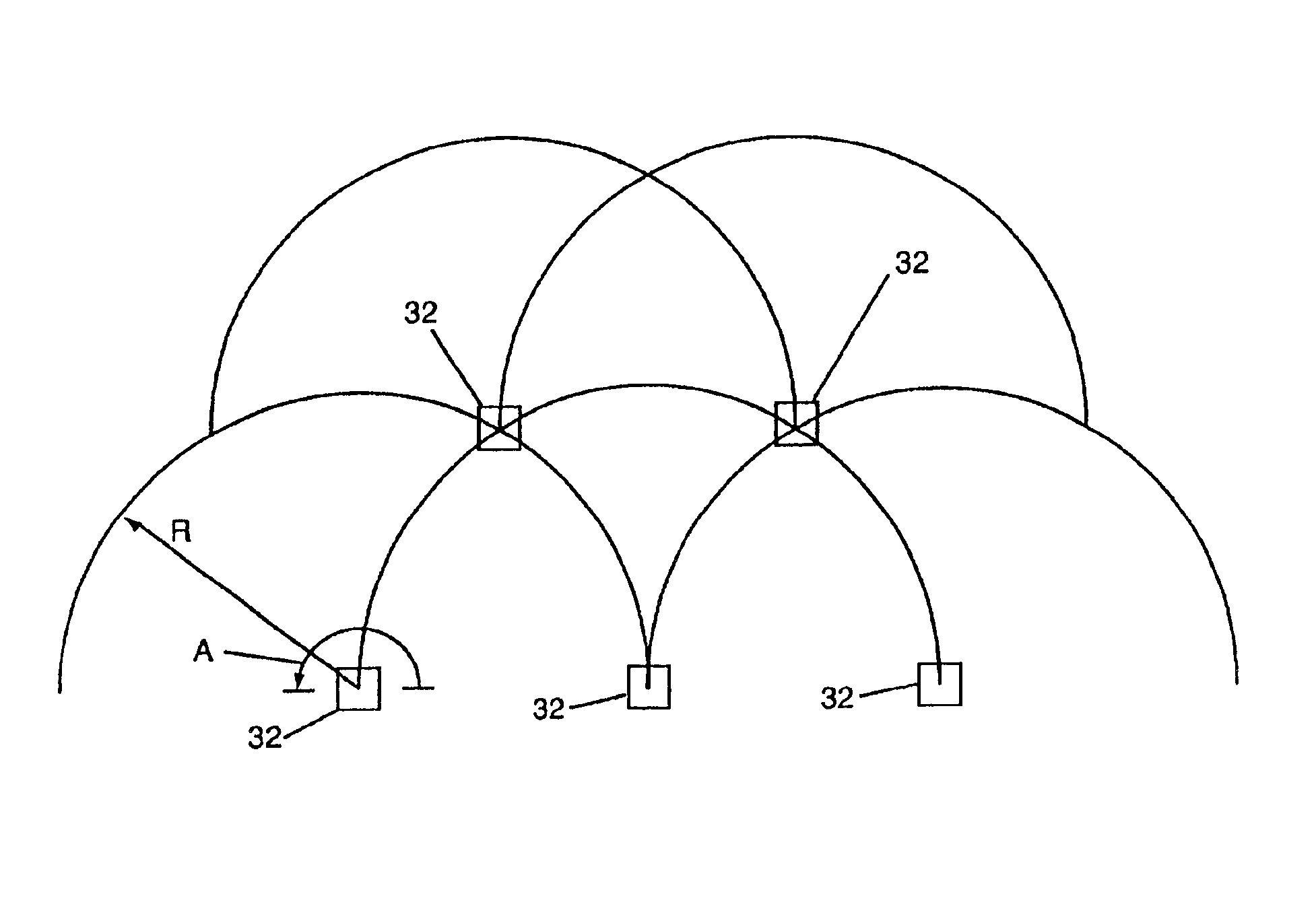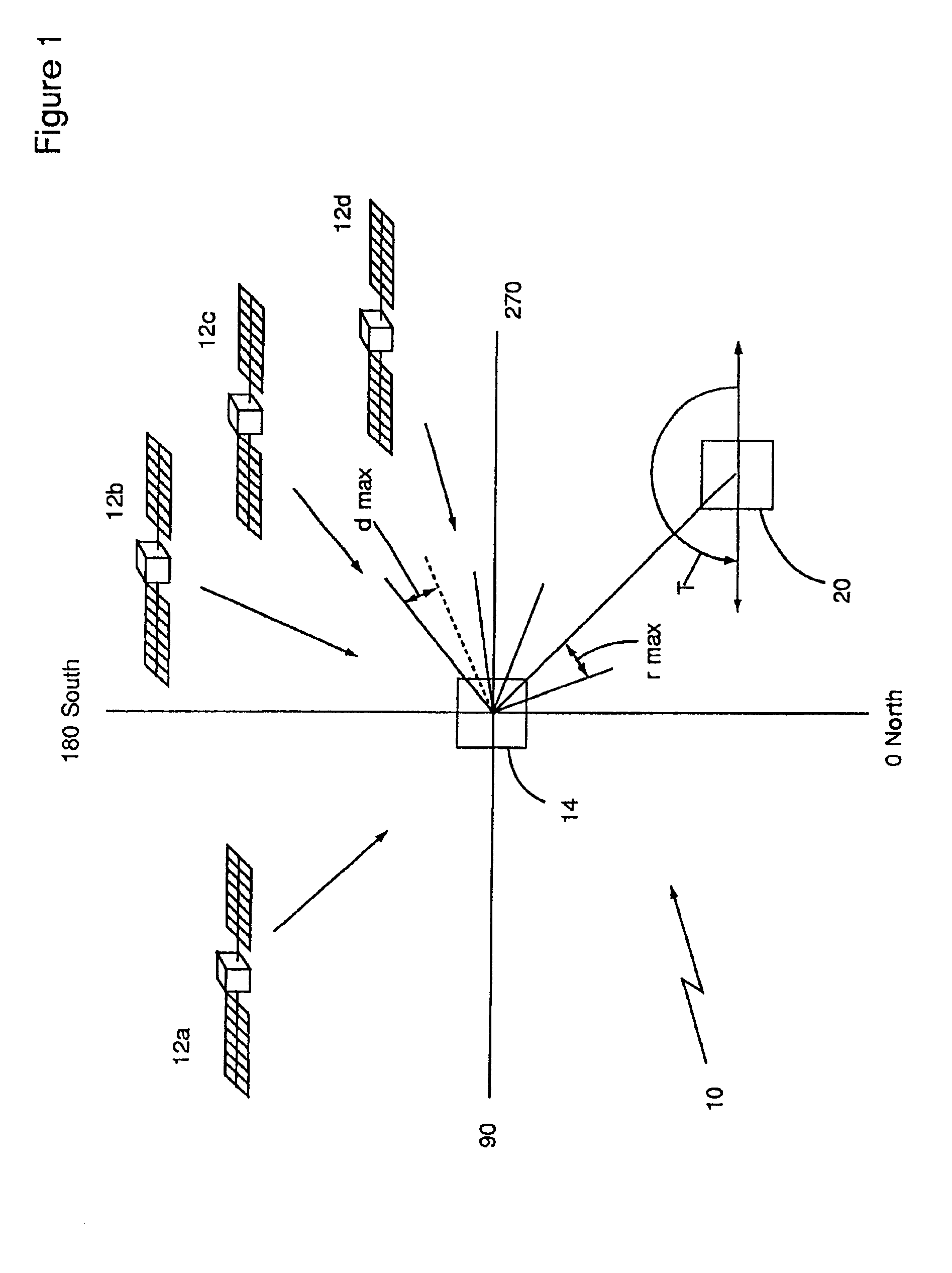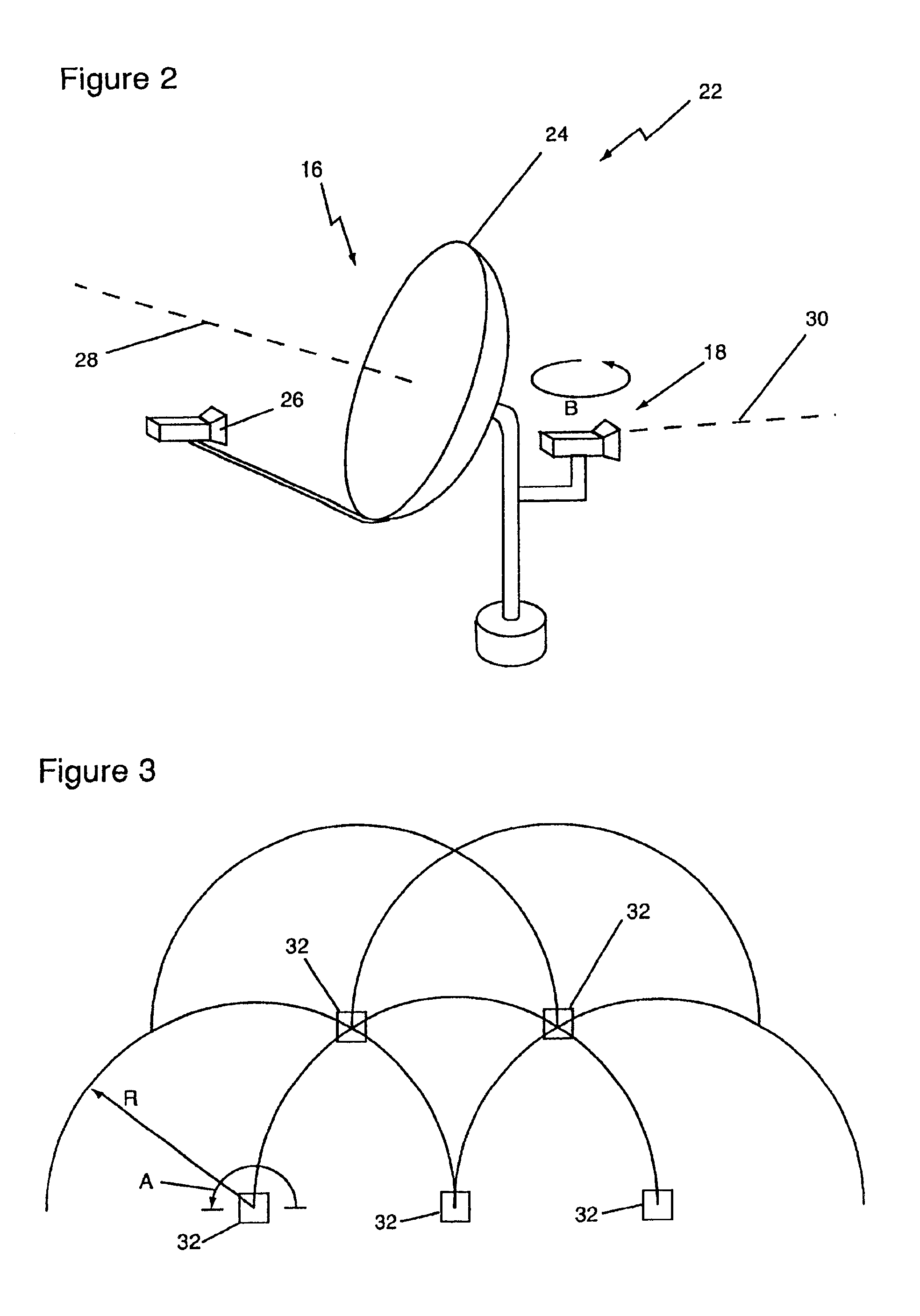Apparatus and method for transmitting terrestrial signals on a common frequency with satellite transmissions
a satellite transmission and terrestrial signal technology, applied in the field of apparatus, can solve the problem that terrestrial and dbs signals on a common frequency cannot be utilized simultaneously
- Summary
- Abstract
- Description
- Claims
- Application Information
AI Technical Summary
Benefits of technology
Problems solved by technology
Method used
Image
Examples
Embodiment Construction
[0016]The apparatus according to the invention for providing terrestrially transmitted signals simultaneously on the same frequency as satellite signals is illustrated in FIGS. 1 and 2. As shown in FIG. 1, the system 10 may be utilized with one or more satellites in geosynchronous orbit about the earth. FIG. 1 shows four satellites 12a, 12b, 12c, and 12d spaced apart at four separate directions from a user location 14. In geosynchronous orbit, each satellite remains at a fixed location with respect to the earth's surface, and thus, with respect to the user location 14. First and second antenna 16 and 18, respectively, which will be discussed in detail with reference to FIG. 2 are located at the user location 14.
[0017]Each of these satellites 12a-d is positioned in geosynchronous orbit about the center of the earth, and is positioned at a certain longitude and latitude above the earth's surface. As is known by those skilled in the art, a receiving antenna may be directed at a certain...
PUM
 Login to View More
Login to View More Abstract
Description
Claims
Application Information
 Login to View More
Login to View More - R&D
- Intellectual Property
- Life Sciences
- Materials
- Tech Scout
- Unparalleled Data Quality
- Higher Quality Content
- 60% Fewer Hallucinations
Browse by: Latest US Patents, China's latest patents, Technical Efficacy Thesaurus, Application Domain, Technology Topic, Popular Technical Reports.
© 2025 PatSnap. All rights reserved.Legal|Privacy policy|Modern Slavery Act Transparency Statement|Sitemap|About US| Contact US: help@patsnap.com



